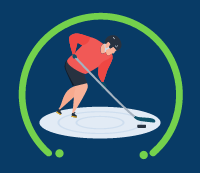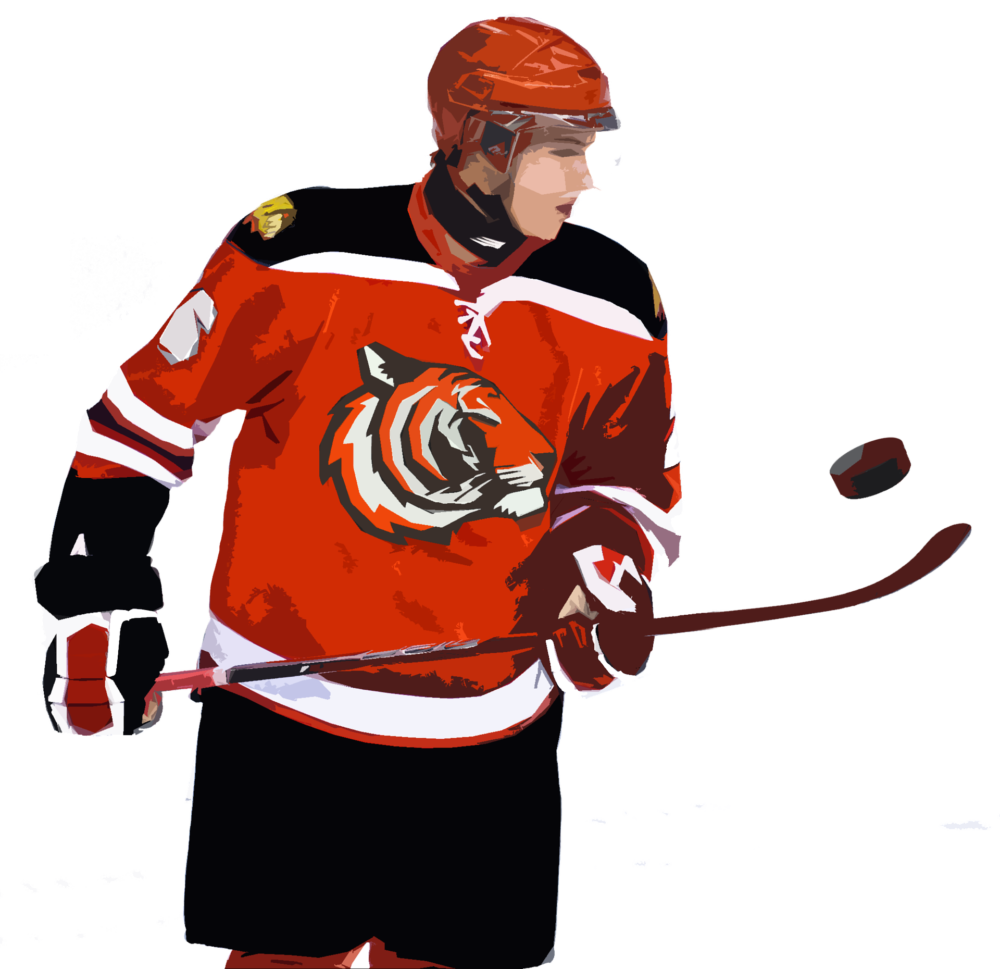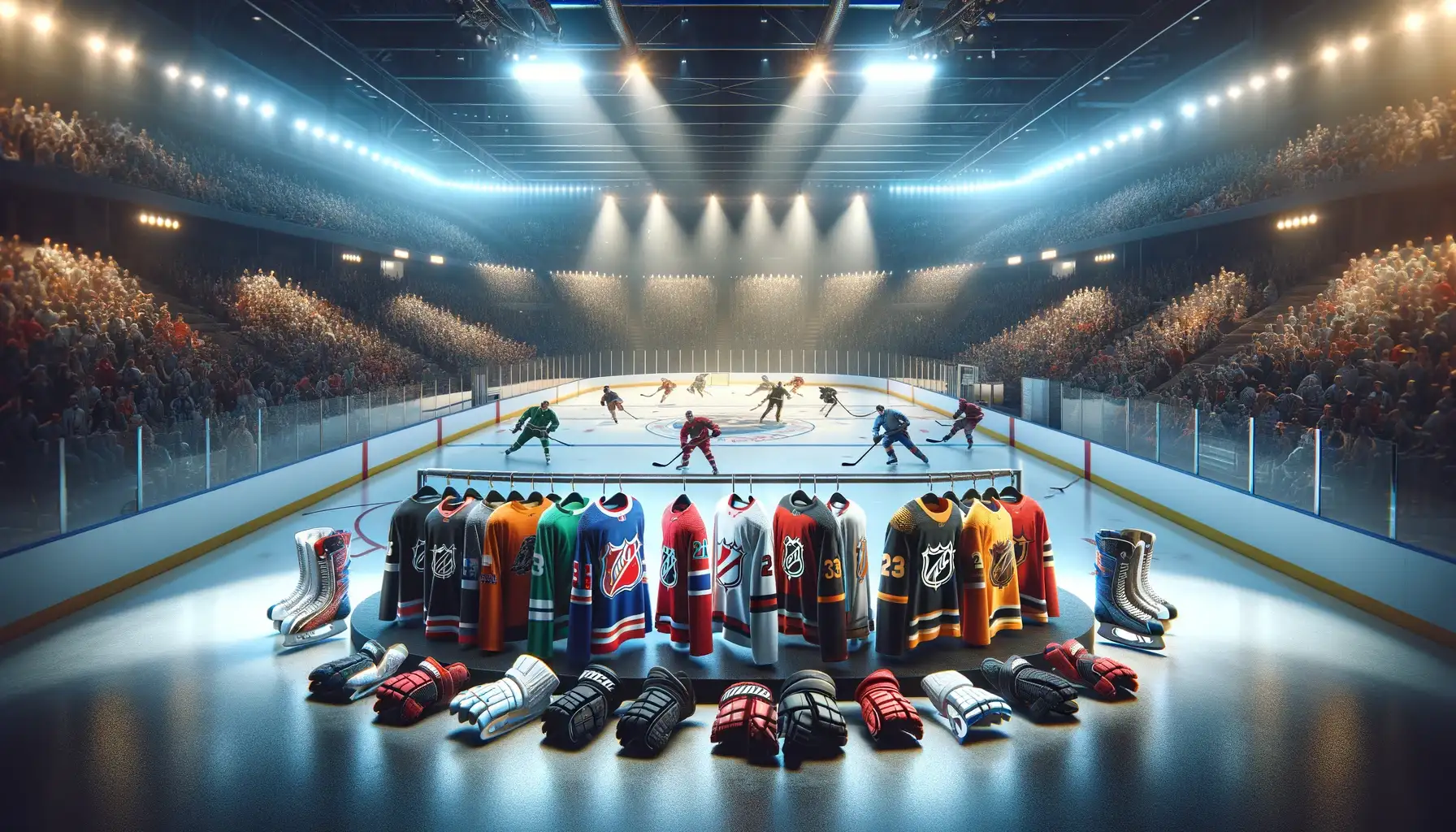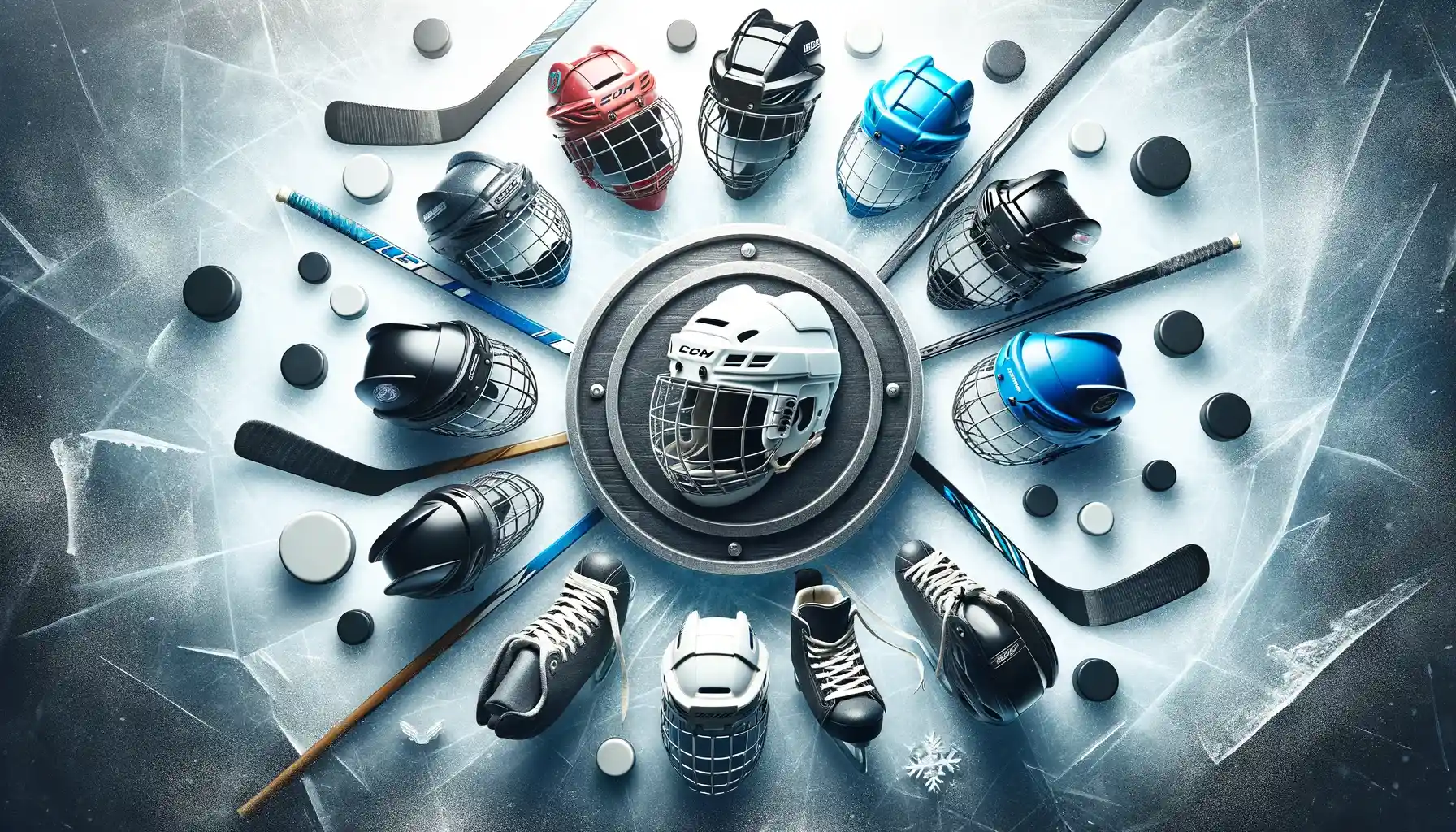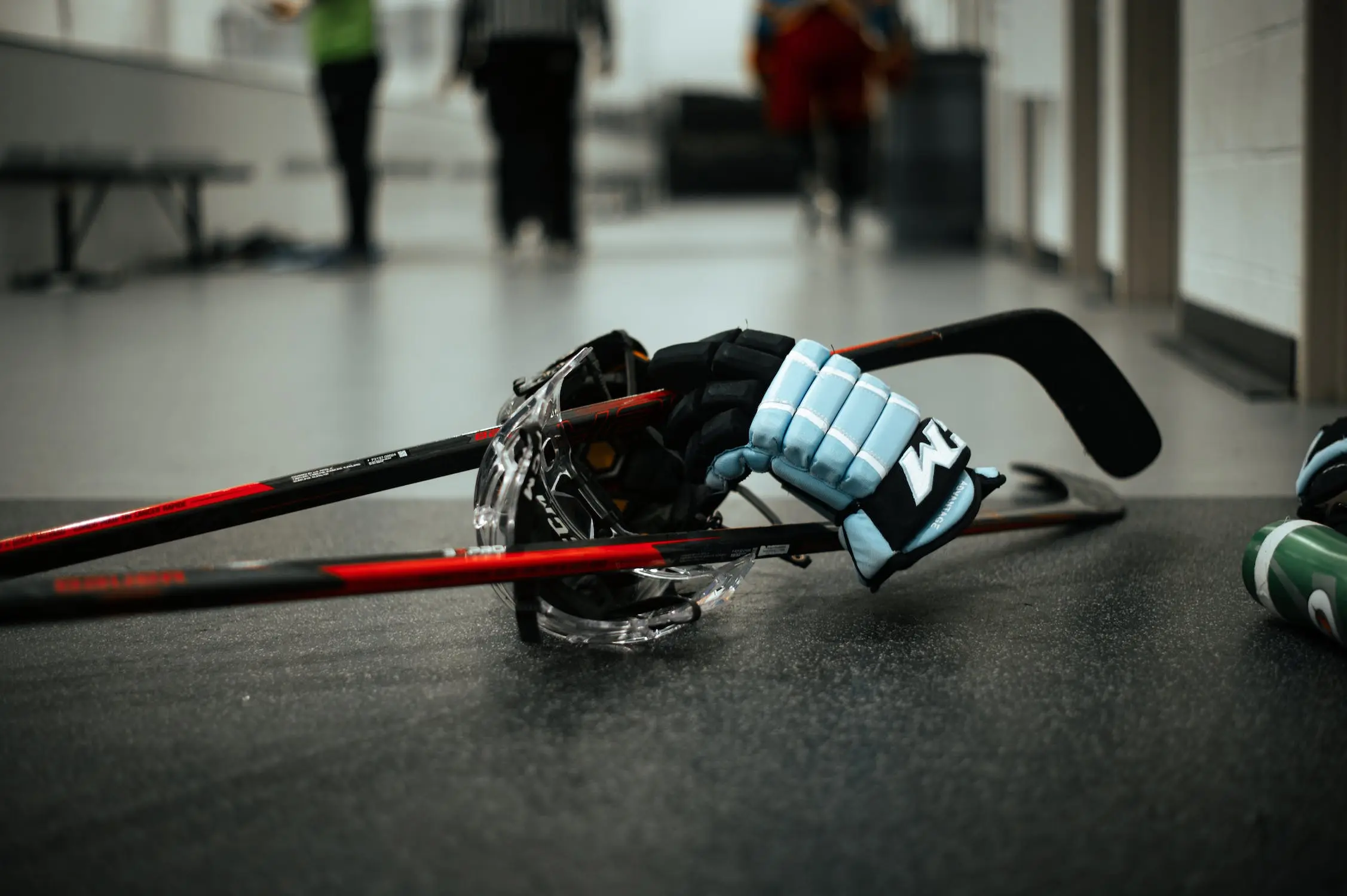When you step onto the ice, your skates are more than just equipment—they’re a crucial part of your performance, comfort, and confidence. This Year , with more skate models, technologies, and fit systems available than ever before, buying hockey skates can feel overwhelming. This updated guide breaks down everything you need to know: from anatomy and fit to skill-level recommendations and recent innovations—all backed by the latest data and real-user insights.
TL;DR
- Fit Comes First: Proper fit is more important than brand—skates should feel snug with minimal heel lift and no negative space to ensure safety and performance.
- Sizing Tips: Hockey skates typically run 1–1.5 sizes smaller than your shoe size. Measure foot length and width for accuracy; don’t size up for kids to “grow into.”
- Skate Types by Skill: Beginners need forgiving, supportive skates; advanced players benefit from stiffer boots and high-performance materials.
- Top Skate Tech (2025): Look for thermoformable boots, lightweight composite shells, blade profiling, and moisture-wicking liners for a performance edge.
- Vapor vs Supreme vs Tacks: Bauer Vapor suits agile players; Supreme supports power and straight-line speed; CCM Tacks fit anatomical, all-purpose skating.
- In-Store vs Online Buying: In-store ensures better fitting with expert help, while online offers more variety and deals—check sizing charts and return policies carefully.
- Budget Breakdown: Entry-level skates range from $50–$150, mid-range from $150–$400, and pro models up to $1000+ with top-tier features and durability.
- Customization Options: Mid- and high-end skates support heat molding, custom insoles, blade swaps, and even 3D laser fitting via Bauer FitLab.
- Maintenance Musts: Sharpen blades every 4–6 hours of use, dry thoroughly, check for damage, and replace skates when performance or comfort declines.
- Skates for Kids & Youth: Prioritize ankle support and comfort; avoid buying too big. Look for adjustable sizing or growth inserts if needed.
Understanding the Anatomy of Hockey Skates
Each component of a skate plays a unique role in balance, power transfer, and comfort. Let’s break it down.
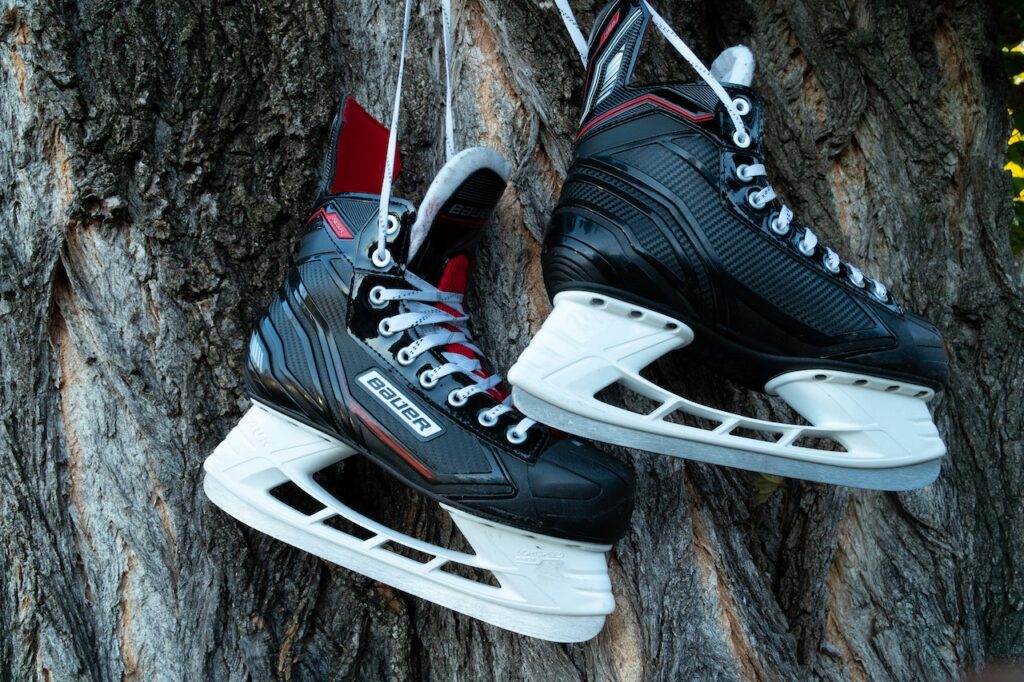
| Part | Description |
|---|---|
| Boot | Made from thermoformable or synthetic materials for a snug, protective fit |
| Blade | Stainless steel, curved for acceleration, balance, and sharp turning |
| Holder | Connects the blade to the boot, allowing energy transfer |
| Toe Cap | Hard outer shell protecting the front of the foot |
| Quarter Package | Wraps from toe to heel, providing structure and ankle support |
| Tendon Guard | Protects Achilles tendon while allowing flex |
| Tongue | Cushioned to protect against lace bite and impact |
| Liner | Wicks away sweat, adds comfort |
| Footbed | Offers arch support and helps with edge control |
| Outsole | Base that connects boot to blade, critical for power transfer |
Material Insights: What Modern Skates Are Made Of?
Today’s skates combine engineering and material science to deliver power, control, and comfort with less weight.
| Material | Characteristics | Advantages |
|---|---|---|
| Fiberglass | Lightweight and durable | Good blend of flex and support |
| Carbon Fiber | Extremely strong and light | Top-end stiffness and power transfer |
| Thermoformable Plastics | Moldable to individual feet | Custom comfort and fit |
| Stainless Steel (Blade) | Holds edge longer | Enhanced glide, agility, and performance |
Hockey Skate Sizing and Fit
Proper fit isn’t just about comfort—it directly affects skating efficiency, prevents injuries, and maximizes energy transfer during play. This becomes even more crucial in 2025 with customizable fit systems like Bauer’s Fit 1–3 and heat-molding options now widely accessible in-store and online.
1. Sizing Basics
Skates typically run 1–1.5 sizes smaller than your regular shoes. For women, the difference may be 2.5–3 sizes smaller. Don’t size up to grow into them—this leads to instability and pain.
2. Fit Guidelines
The perfect fit means:
- Toes lightly touch the cap (no cramping)
- Heel is snug with no more than one finger’s space
- No ankle wobble
- Secure lace lockdown without lace bite
3. Width & Profiles (Bauer Fit 1–3 System)
Brands like Bauer offer multiple width profiles:
- Fit 1: Narrow forefoot, low instep
- Fit 2: Average width and depth
- Fit 3: Wide forefoot and deep heel
4. Tips for Accurate Fitting
- Trace foot on paper to measure length in mm
- Try skates with the same socks you’ll wear during play
- For best fit: heat mold them or visit a store with 3D scanning (e.g., Bauer FitLab)
Fit Chart Summary
A quick guide to aligning foot shape, size, and fit for a confident skate purchase.
| Factor | Description | Tips for Perfect Fit |
|---|---|---|
| Skate Size vs. Shoe Size | Hockey skates generally run 1–1.5 sizes smaller than regular shoe sizes. For women, this could be 2.5–3 sizes smaller. | Measure your foot in inches and compare it to the skate manufacturer’s sizing chart. |
| Heel Space | Ideal heel space is about a quarter-inch when standing in skates. | Ensure your heel is snug in the boot to prevent sliding, which can impact skating efficiency. |
| Toe Position | Toes should slightly touch the toe cap but not be cramped. | Wiggle your toes to ensure there's enough room for slight movement without excessive space. |
| Width Fitting | Skates come in various widths to accommodate different foot shapes. | Choose a width that complements the breadth of your foot, ensuring even pressure distribution. |
| Ankle Support | Essential for stability and control. | The skate should firmly support your ankle without causing discomfort or restricting movement. |
- For more on proper sizing, read about Choosing the Right Hockey Skate Hollow.
- Understand more about Ice Hockey Skating Drills to improve your performance with well-fitted skates.
Choosing Hockey Skates Based on Usage and Skill Level
Before selecting a skate, think about how often you hit the ice and what level you’re playing at—these factors directly impact the features, fit, and stiffness you’ll need. Beginners might benefit from more flexible, forgiving models, while elite players often require custom-fit, performance-grade builds.
A. Usage Frequency & Environment
How often and where you play should determine the build, durability, and flexibility of your skates. Daily players need long-lasting performance, while occasional users may prioritize comfort and affordability.
| Usage Frequency | Playing Environment | Recommended Skate Features |
|---|---|---|
| Daily (Intensive) | Ice Rink | High durability, superior comfort, high performance |
| Weekly (Casual) | Ice Rink | Moderate durability, good comfort, flexibility |
| Occasional | Street Hockey | Enhanced abrasion resistance, flexibility, comfort |
| Recreational | Mixed (Ice & Street) | Versatility, moderate durability, comfort |
B. Skates for Different Skill Levels
Not every player needs pro-level gear. This section helps match skate stiffness, blade quality, and comfort to your current abilities—so you progress without over- or under-investing.
| Skill Level | Boot Stiffness | Blade Quality | Additional Features |
|---|---|---|---|
| Beginner | Low to Medium | Standard | Enhanced stability, comfort |
| Intermediate | Medium | High | Good balance, ankle support |
| Advanced | High | Premium | Lightweight, agility boost |
Skate Tech & Personal Preferences (2025 Trends)
Advancements in material science, blade technology, and foot-mapping tools are changing how players shop and skate—especially for those who demand peak customization and performance.
A. Latest Tech
From carbon-fiber builds to heat-molding customization, the latest skate innovations are focused on improving energy transfer, agility, and comfort. Heat Molding: Quickens break-in time, customizes feel
- Lightweight Carbon Composites: Improves speed, reduces fatigue
- Adjustable Blade Holders: Modify radius for agility vs. glide
B. Personalization for Playing Style
Your position and playing style influence your skate choice profoundly. Tailor your skates to your playing style and technical preferences with this table:
| Position | Ideal Skate Features |
|---|---|
| Forward | Lightweight boot, high ankle flex, agility-focused blade |
| Defenseman | Reinforced boot, high stability, longer blade radius |
| Goaltender | Wide base, lateral support, flatter blade |
Purchase Considerations: In-Store vs. Online
Where you buy your skates matters just as much as what you buy. This section breaks down the pros and cons of in-store and online shopping so you can make the best choice for your needs.
| Purchase Method | Advantages | Disadvantages | Best For |
|---|---|---|---|
| In-Store | Immediate fit feedback, expert advice, physical comparison | Limited variety, potentially higher prices | Skaters who prioritize fit and personal guidance |
| Online | Wider selection, convenience, often better deals | Risk of incorrect fit, reliance on size charts | Skaters looking for more options and lower prices |
Tip: Always review the store’s return policy and check for satisfaction guarantees—especially when buying online.
Trusted Brands & Satisfaction Guarantees
Brands like CCM, Bauer, and True often offer free returns, satisfaction guarantees, or fit-assurance programs—like Bauer’s MyBauer custom fit or CCM’s JetSpeed Try-On Promise. These policies are especially helpful in 2025’s growing e-commerce space, where precise sizing can be a challenge despite expanded FitLab scans and 3D foot measurement tools.
For more on product reliability and skate models, visit:
While learning how to buy the right hockey skates, explore the various options available in our guide on Hockey Skate Brands. For a deeper understanding of what sets different brands apart, don’t miss our in-depth comparison in CCM vs. Bauer. Additionally, improve your skills and make the most of your new skates with helpful Ice Hockey Skating Drills.
Popular Skate Series & What They’re Best At
Understanding the key differences between major skate lines can help you choose a model that matches your style and position.
| Skate Series | Target Player | Key Features | Ideal for |
|---|---|---|---|
| Bauer Vapor | Speedy, agile players | Curv Composite, 3D-lasted boot, X-rib pattern | Quick movements, tight turns |
| CCM Tacks | Power players, all-round | Carbon composite, anatomical shape, moisture management | Stability, energy transfer |
| Bauer Supreme | Defensive, physical play | Power-focused frame, stiffer boot for energy transfer | Powerful strides, stability |
| CCM Ribcor | Agile, quick players | Responsive flex, lightweight design | Fast stops, quick edgework |
| CCM Jetspeed | Fast, agile players | Lightweight boot, acceleration-driven blade design | Acceleration, fluid transitions |
Budgeting & Skates Pricing
Skates range from $50 to over $1000. Your best choice depends not only on price but on how often you skate, your skill level, and future goals. Beginners hitting the ice occasionally can find great value in mid-range models ($150–$400), while competitive players may benefit from premium options that offer lightweight composites, heat-moldable boots, and enhanced blade holders—all innovations driving the 2025 market forward.
| Price Tier | Target Audience | Expected Features | Price Range |
|---|---|---|---|
| Entry-Level | Beginners, casual players | Basic comfort and protection | $50 – $150 |
| Mid-Range | Intermediate players | Durable boot, higher-grade blades, heat molding options | $150 – $400 |
| High-End | Competitive/elite athletes | Lightweight tech, max support, premium materials | $400 – $1000+ |
Investing in premium skates often reduces injury risk and improves performance over the long haul.
Hockey Skates Maintenance and Care
Regular care isn’t just about appearance—it’s about performance, comfort, and preventing costly replacements. Here’s how to properly care for and extend the life of your hockey skates.
Hockey Skates Routine Care Checklist
| Maintenance Task | Description | Frequency |
|---|---|---|
| Blade Sharpening | Maintain edge sharpness for glide, turns, and control | Every 4–6 hours of ice time |
| Dry Thoroughly | Prevent rust by drying blades, liners, and removing footbeds | After every session |
| Lace Inspection | Check for fraying or overstretching | Monthly or as needed |
| Boot Cleaning | Wipe with mild soap and water to avoid material breakdown | Weekly or bi-weekly |
| Screw Tightening | Check holders, runners, and eyelets for loosening | Every few weeks or after impact |
| Damage Check | Look for cracks, sole separation, broken eyelets, liner collapse | Monthly or post-collision |
Signs It’s Time to Replace Your Skates
Even high-end skates reach their limit. Here are some key indicators it’s time to upgrade:
| Sign of Wear | Description |
|---|---|
| Persistent Discomfort | Pain or pressure after break-in or heat molding |
| Loss of Ankle Support | Excessive flex leading to instability or foot fatigue |
| Blade Sharpening Limit | Blades too short or warped from repeated sharpening |
| Boot Damage | Cracked shell, detached outsole, broken toe caps |
| Declining Performance | Noticeable drop in agility, acceleration, or edge stability |
Kids’ Skate Maintenance & Sizing Tips
Kids’ skates require special attention as feet grow fast and comfort affects performance.
- Look for adjustable youth models with growth inserts.
- Prioritize ankle support to build confidence and prevent injury.
- Don’t size up significantly to “grow into” skates—this reduces control.
Custom Adjustments for Fit & Performance
Modern skates can be customized for a nearly perfect feel and power transfer. Here are 2025 go-to methods:
- Heat Molding: Found in mid- to high-end skates; customizes fit in-store.
- Blade Profiling: Fine-tune blade rocker and pitch to match playing style.
- Upgraded Insoles: Superfeet or custom orthotics boost arch and heel support.
- Bauer MyBauer: Personalized skates using 3D laser scans for optimal shape and stiffness.
FAQs: How to Buy Hockey Skates
How do I choose a hockey skate?
Select skates that fit snugly with minimal heel movement, offering comfort and ankle support. Consider your skill level and playing style, and opt for materials and blade designs that enhance your performance on ice.
How do I know what size hockey skates I need?
Hockey skate sizes are typically 1-1.5 sizes smaller than your shoe size. For an accurate fit, measure your foot and refer to the brand’s specific size chart, ensuring a snug, comfortable fit.
How do I know what skates to buy?
Assess your playing frequency, skill level, and foot shape. Look for skates that provide the right balance of comfort, support, and durability. Research brands and read reviews to understand different models’ performance and quality.
How to buy skates for beginners?
Beginners should prioritize comfort and support. Choose skates with a bit more flexibility for easier break-in and a forgiving fit. Ensure they offer good ankle support and a comfortable, snug fit without being too tight.
What are hockey skates made of?
Hockey skates are typically made from a combination of leather, synthetic materials, and carbon fiber, offering durability and flexibility. The blades are usually stainless steel for strength and sharpness.
How much do hockey skates cost?
Hockey skates range from $50 for basic models to over $700 for professional-grade skates. Price varies based on materials, technology, and brand.
What size hockey skates should I get?
Typically, select a size 1-1.5 smaller than your regular shoe size. For an accurate fit, measure your foot length and consult the brand’s size chart.
Which hockey skates are best for my style of play?
For aggressive players, choose stiffer skates for better energy transfer. Playmakers might prefer more flexible skates for maneuverability.
How to buy kids’ hockey skates?
Look for adjustable-size skates for growing feet, ensuring they offer good ankle support and comfort. Durability is key for active young players.
Goalie skates vs. player skates
Goalie skates have flatter, shorter blades for stability and wider boots for protection, while player skates are designed for speed and agility with longer, curved blades.
Hockey skates vs. figure skates
Hockey skates have a rounded blade for quick turns and stops, while figure skates have toe picks and longer blades for jumps and spins. To know more,read our guide on Hockey Skates vs. Figure Skates.
How to bake hockey skates?
Baking skates in a skate oven at a pro shop custom molds them to your feet for a personalized fit. DIY baking is not recommended due to the risk of damaging the skates.
How (and how often) to sharpen hockey skates?
Sharpen skates every 4-6 weeks or after 20 hours of ice time. Regular hockey skate sharpening ensures optimal performance and safety on ice.
When to replace hockey skate blades?
Replace blades when they are too short to be sharpened or if they’re damaged. Regular inspections can help determine the right time for replacement.
What is the difference between Bauer Vapor, Supreme, and CCM Tacks skates?
Bauer Vapor is built for agility, Supreme for power and stability, while CCM Tacks offer an anatomical fit for balanced performance.
What is the best time of year to buy hockey skates?
The best deals often appear at the end of the season (spring/summer clearance) or during major holiday sales like Black Friday.
Can I use heat molding on all hockey skates?
Only mid- and high-end models support baking. Entry-level skates often don’t have thermoformable material and can be damaged if baked.
Do expensive hockey skates make a difference for beginners?
Not necessarily. Beginners benefit more from comfort and ankle support than top-tier materials or stiffness found in elite models.
How tight should hockey skates feel when new?
They should feel snug with minimal negative space. Your toes should feather the toe cap, but not curl.
Are used hockey skates a good idea?
Experts advise caution—used skates may have hidden structural damage and foam breakdown, compromising safety and performance.
Skates are your most important gear. Take care of them like you would a pair of high-performance running shoes. Maintenance, fit, and timely upgrades aren’t just extras—they’re game-changers.
